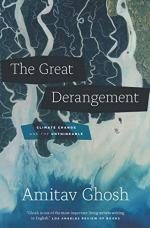
|
| Name: _________________________ | Period: ___________________ |
This quiz consists of 5 multiple choice and 5 short answer questions through Part I, Sections 9 -14.
Multiple Choice Questions
1. What term from Norse mythology meaning "great winter" is used in Part 1, Section 12?
(a) Intuwintre.
(b) Ixbewinter.
(c) Codowintre.
(d) Fimbulwinter.
2. What giant leap of nature likely led to the extinction of the dinosaurs?
(a) The Bennu asteroid.
(b) The Aglale asteroid.
(c) The Apophis asteroid.
(d) The Chicxulub asteroid.
3. When was the city of Port Canning inaugurated with a grand ceremony?
(a) 1826.
(b) 1919.
(c) 1854.
(d) 1864.
4. Who wrote Sacred Theory of the Earth (1690)?
(a) Alfred Wegener.
(b) Gustave Flaubert.
(c) Thomas Burnet.
(d) Stanislaw Lem.
5. Who wrote the seminal essay "The Climate of HIstory"?
(a) Ian Hacking.
(b) Stanislaw Lem.
(c) Dipesh Chakrabarty.
(d) Arudhati Roy.
Short Answer Questions
1. Who wrote, "Climate change is inherently uncanny: Weather conditions, and the high-carbon lifestyles that are changing them, are extremely familiar and yet have now been given a new menace and uncertainty" (30)?
2. When was the movie made that is referenced in Part 1, Section 1?
3. What was the author doing as a part-time job while earning his MA at Delhi University?
4. On what night did the author read about a cataclysmic tsunami set off by a massive undersea earthquake in the Indian Ocean, according to his narrative in Part 1, Section 9?
5. Where does the author describe experiencing a cyclone that flooded a pond behind his house in Part 1, Section 2?
|
This section contains 229 words (approx. 1 page at 300 words per page) |

|




